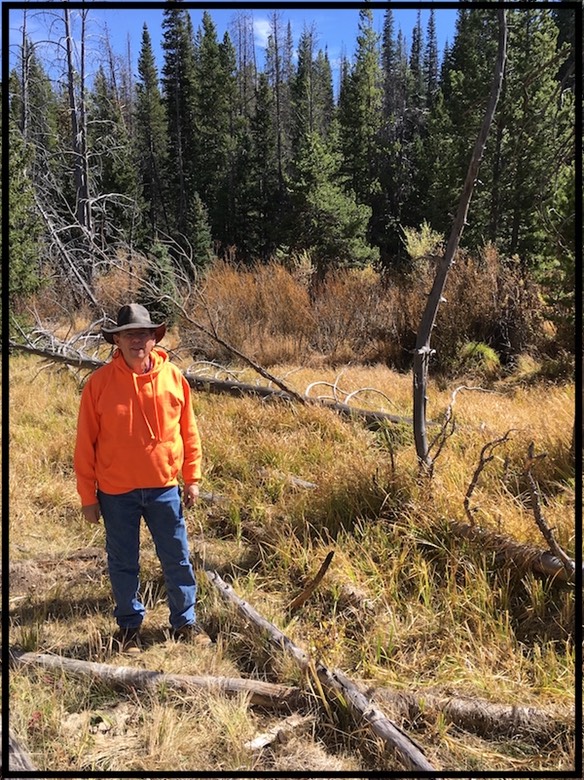Phil Thornton continues his quest to retrace his great-great-grandfather’s trails across America, or, in his latest effort, to refine a previous attempt. Phil had already glimpsed the rugged landscape of southeast Wyoming and leafed through mining claims on file in the local courthouse. A few weeks ago he went back to verify the exact location of Lincoln Gulch, the epicenter of the Lovewell family’s prospecting sojourns more than a century ago. Phil returned home with one of those breathtaking panoramic landscape shots which today can be accomplished with the wave of a smartphone - although it does take a steady hand.

The area looks exactly as I imagined it after reading Simpson Grant Lovewell’s report to the folks back in north-central Kansas in 1903, along with accounts in Wyoming newspapers concerning the family’s bouts with mountain fever and self-lighting sticks of dynamite. Phil’s photograph gives us some idea of how the visitors from Jewell County got their cabins up so quickly after rolling into the campsite and piling out of their wagons. There was certainly no shortage of timber that seemed to have been custom-grown for building log houses, and plenty of fuel waiting to be collected for campfire and fireplaces.
I was surprised to learn a few years back that my mother’s family briefly lived in Wyoming when she was very young. The only documentary evidence for their stay in the Cowboy State is my grandfather’s draft registration for the Great War, which contains the information that he was tall and stout, with blue eyes and brown hair. It was hair that required a combover to preserve a youthful appearance, but it was still brown when described on that registraton form when he was in his mid-thirties, and would remain that color until the day he sent his youngest son off to fight in America's next war, when a family legend declares that it turned white overnight.
Like his father and grandfather, Will Logan was a blacksmith, though in 1917 he was working for a man named F. L. Belcher of Wheatland, who, besides owning a large blacksmith shop had ventured into a side-business of building sheep barns. Both men must have seen the writing on the wall and decided that the days of the lone smith toiling under a spreading chestnut tree were quickly coming to an end. Newspaper ads, back in Lovewell and here in Platte County, Wyoming, informed readers that they could be driving a new Ford for less than $400, while improved, less-bumpy roads to drive it on were just around the corner.
Speaking of the First World War and game-changing technology, there’s a documentary by Peter Jackson just released in the U.K. called “They Shall Not Grow Old,” featuring vintage film taken at the front, narrated by the soldiers who fought there. To say that the footage has been spruced up for a modern audience is an understatement. The images have been painstakingly restored, judiciously colorized and converted for viewing in 3D. It’s the war as the veterans themselves must have vividly remembered it, as they sat in front of BBC microphones in the 1960’s and told their stories. Most importantly, computer firepower has fluidly adjusted the frame-rate of the century-old footage. No longer do figures hop around the screen in a Chaplinesque pantomime - they simply move, live, breathe, laugh, march and fight. We can even hear the men’s offhand remarks as they josh and jostle, thanks to a script prepared by forensic lip-readers and performed by actors speaking the appropriate dialects, based on regimental insignias. It seems less like a restoration of antique movie clips than a modern re-enactment starring the same people, forever young.

Even watching those little bits of the documentary available for previwing on the World Wide Web at the moment, somehow compresses the gulf between then and now. Instead of a century ago in Europe, the footage might have been taken last week in Ukraine.
The figures in it are not an alien race from times past but contemporary young men with irrepresible smiles and diverse regional accents, made familiar to Americans through decades of imported movies and TV shows. Not only is the world shrinking, so is time.
No restoration is necessary for visualizing the Wyoming landscape that Thomas Lovewell first saw in 1859 and revisited every year between 1901 and 1908, still seeking that fortune Horace Greeley said was out there waiting for him.
Thanks to Phil Thornton, we can be pretty sure they haven’t changed a thing.